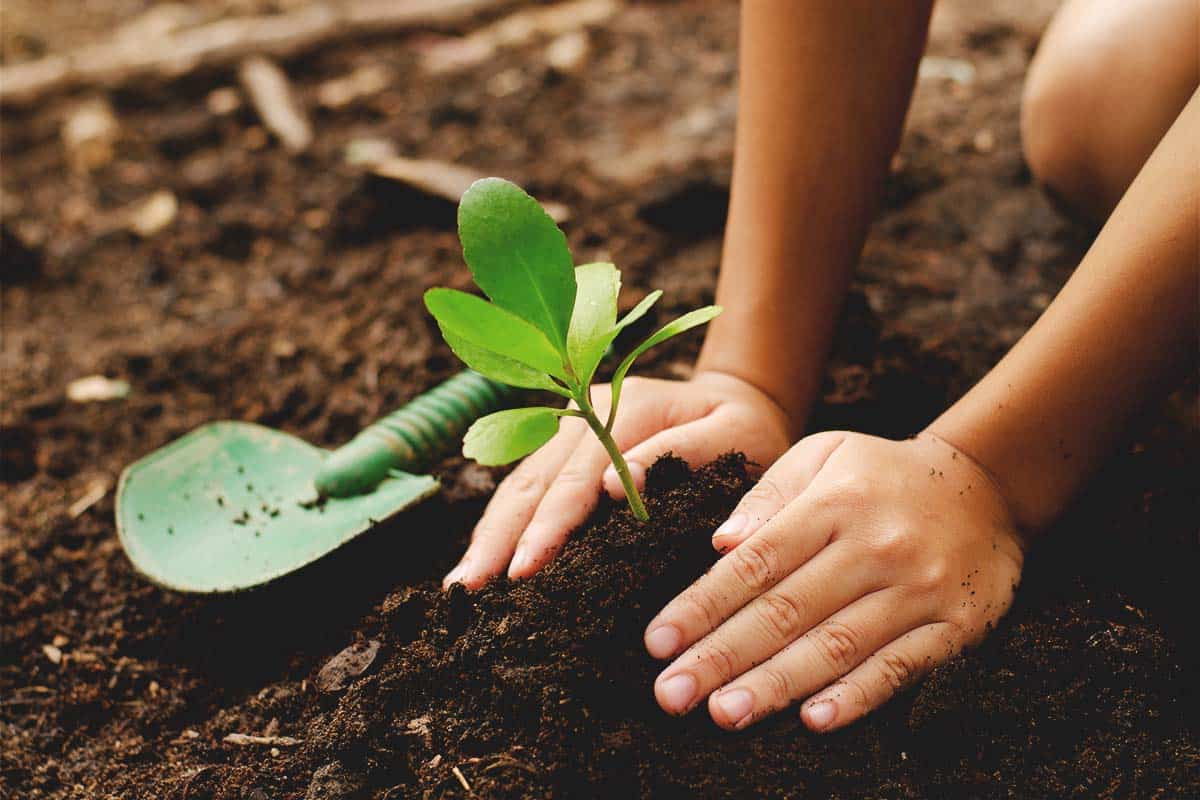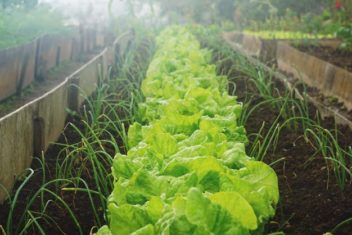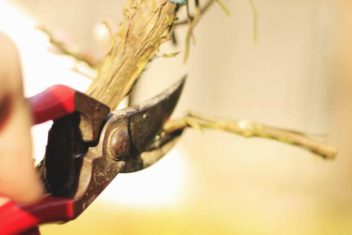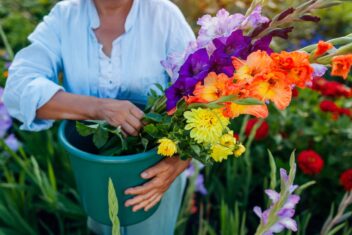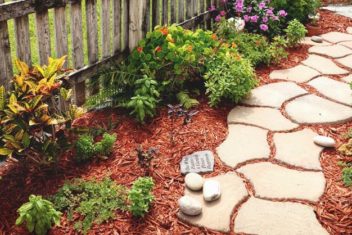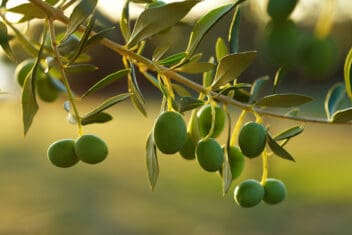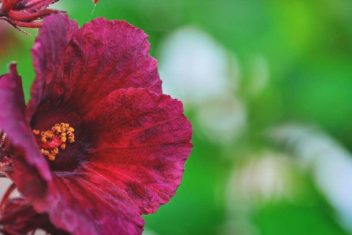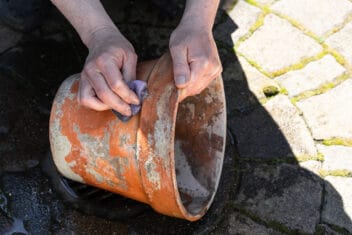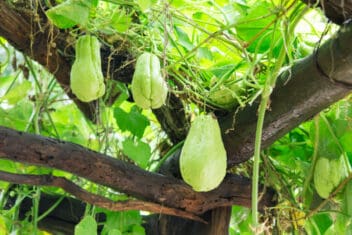Getting plants for your garden can cost a lot of money. But if you’re on a tight budget, there’s no reason not to have a marvelous garden. You just need to know where to find free plants to make the most of your money.
Say you want to add some vegetables, herbs, some flowers, and maybe a fruit tree to your garden. That’s an ambitious and costly plan if you’re going to pay retail price. Add in some decorative pots or containers, and you need some seriously deep pockets.
Assuming you’re not rich, if you want to save some money and still have the garden you dream of, here are several ways you can get free plants to add to your garden beds.
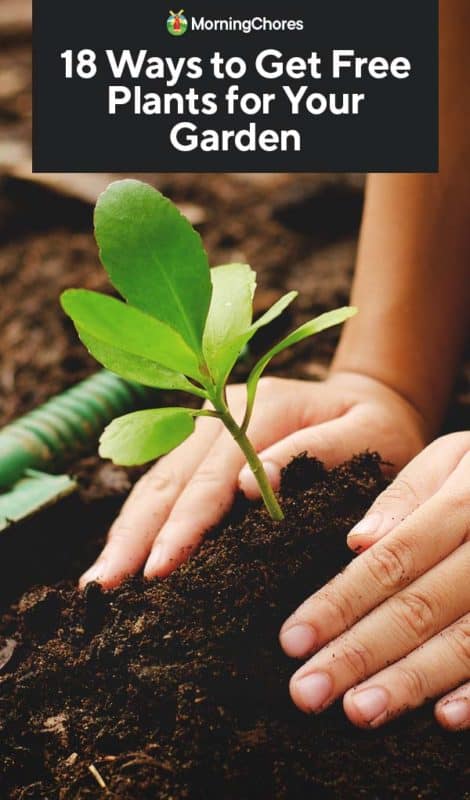
How to Get Free Plants for Your Garden
1. Ask Your Friends
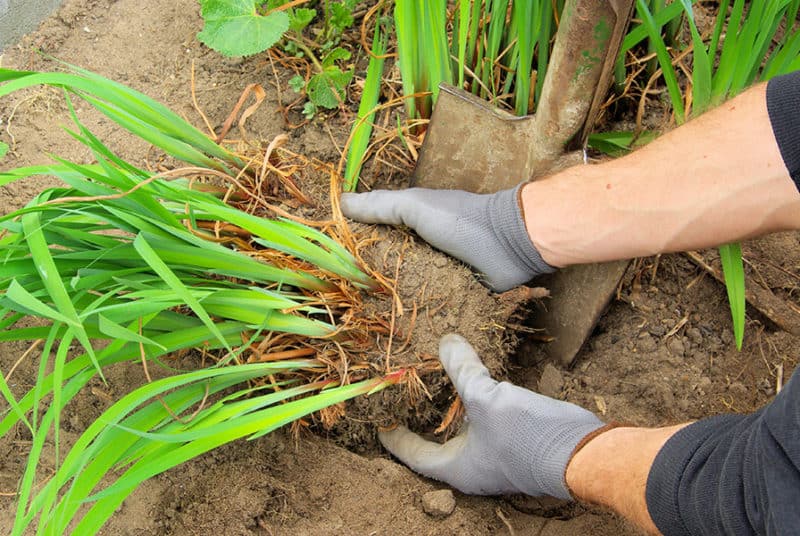
The best place to start is to see if your friends and family have any plants to give away. They might have started too many seedlings (that’s something I do every year), or they could have plants that need to be divided.
Don’t make your friends do the work for you! Offer to come over and divide or dig up the plants for them. You’re getting them for free after all, so some elbow grease is appropriate.
2. Save Your Seeds
One of the easiest ways to get free plants is to save the seeds from your previous gardening season. You can have an entire vegetable garden for free if you learn how to save seeds properly.
When you save seeds, you take from the best plants you had that year. The next year, you’ll have stronger, more disease and pest resistant plants that grow even better in your climate. Make sure you pick up heirloom seeds for that first year and not hybrid seeds or plants. Some hybrid plants are genetically modified to produce sterile seeds.
3. Join a Seed Swap Group
You can find dozens of seed swapping groups, especially if you look on Facebook or other online forums. In these groups, you send someone seeds they want, and they send you seeds that you want. It’s all for the cost of postage.
If you’re like me and save your seeds at the end of the season, you can end up with a lot of seeds that you don’t need. I’m always happy to trade those seeds for ones that I want to try or need.
4. Prune and Divide Existing Plants
If you have perennial plants already growing in your garden, you can prune and divide those existing plants. Plants such as daylilies, hostas, and peonies grow rapidly and large so that you can turn one plant into two, three, or more throughout the years.
If you’re going to grow from a cutting, you want rooting hormones. Dip the cutting into the rooting powder to encourage the plant to take root. It’s easier than you think to grow a plant from a cutting.
5. Divide Herbs
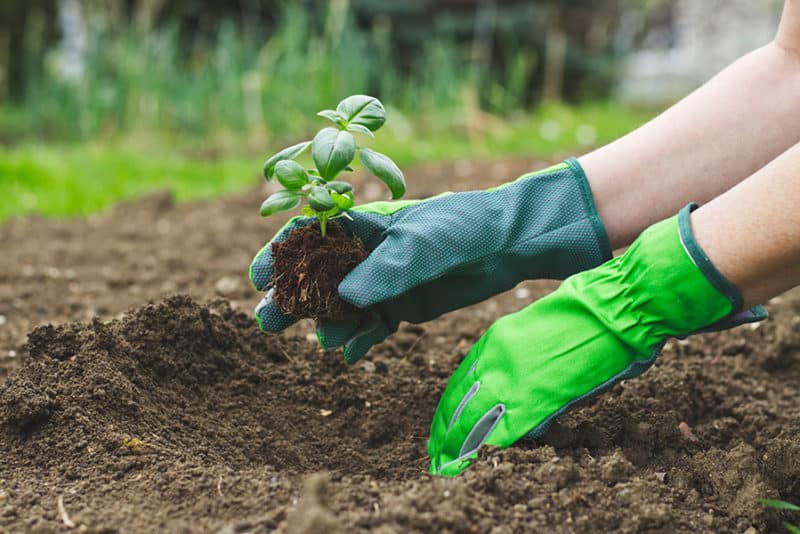
Many plants tend to get too big for your intended spot in the garden. You can divide and dig up these herbs and plant them in your garden or add to different places! Herbs such as chives, lemon balm, lime balm, mint, oregano, thyme, lovage, bergamot, and lemongrass divide and grow well.
6. Join a Gardening Club
See if there are any gardening clubs in your area. Not only can you learn a lot about gardening when you talk to like-minded people who all share a similar love, but you also can reap the benefits of free plants. Gardeners understand the value of dividing and sharing plants, so you can expect people to offer what they often have. Just make sure to provide things in return!
7. Find a Local Freebies Group
Facebook has dozens of freebie groups for all areas, so join a few. You might find that people post when they have free plants to give away!
8. Host a Plant or Seed Swap Lunch
Do you have several gardening friends? All gardeners love swap lunches! You can host one right at your house. Set out some sandwiches and other yummy treats, and ask all of your gardening friends to bring some plants or seeds that they’re happy to swap with other local gardeners.
You wouldn’t believe the treasures that you can find this way. I found dozens of seeds that decreased my gardening costs, and I even left with some cuttings for raspberry bushes.
9. Curb Shop
As the weather starts to warm up, gardeners get to work, dividing and thinning their perennials and existing plants. Some of those plants might end up on the curb. So, take a drive throughout the growing season and look for free bulbs and divisions for your garden. If it’s on the curb, it’s free for you to take!
10. Self Sow Volunteer Plants
Volunteer plants grow on their own rather than by a human gardener. Volunteers grow from seeds that float in on the wind, are dropped by birds, mixed into the compost, or dropped into your garden by rotten veggies.
Volunteers can be encouraged once they appear. You can water, fertilize, and even transfer volunteer plants. Nature is generous, and you can find them popping up everywhere. I find tomato seedlings pop up all over my garden, especially where I planted them the previous year.
11. Check Your Local Classified Ads

Craigslist, Freecycle, and your newspaper have classified ads where people list things for free. Many people don’t want to toss out perfectly healthy plants, so they’ll list what they have for available for someone to come pick up at their house. Look for offers starting in March, April, or whenever it starts to warm up in your region.
12. Look at Retail Clearance Racks
I love the clearance racks at retail gardening stores. One year, I found a dying hanging basket for $1, and I took it home. I nursed it back to help with some fertilizer and TLC. You wouldn’t believe how lovely that plant became, and I received dozens of comments on it!
Those clearance racks can be a hidden treasure trove. They might cost you a few dollars, but they’ll be a fraction of the cost you would spend for a healthy plant. You can even find local stores that are tossing out dried-up plants that will let you take them for free. Stores don’t have the time to devote to nursing plants back to health since they have thousands of plants, but you have the time.
13. Buy at Local Markets
These won’t be free because someone is selling the seedlings at the market, but buying directly from growers often means you get plants at a fraction of retail costs. You can find tube stock, native plants, herbs, flowers, and veggie seedlings.
Doing this also gives you the chance to meet local gardeners and growers. You might even find some helpful growing tips for your region.
14. See if Your Local Extension Office Offers Plants
Not only can your local extension office be an invaluable source of information for growing plants in your region, but some offices offer free plants for people in their county. You might find some native plants or a tray of veggie seedlings waiting for you.
15. Join Store Mailing Lists
Some stores, such as Lowes and Home Depot, have gardening clubs. You can join their mailing list and receive coupons regularly. While these aren’t free plants, I’ve received buy-one-get-one-free coupons. It helps to decrease the cost of what I can’t find for free.
16. Ask for Plants as a Gift
Is your birthday coming up? Do you have kids? If your friends and family want gift ideas for your birthday or Mother’s Day, tell them what you want – plants, or suggest a gift card to stores where you want to purchase new plants for your garden.
For Mother’s Day each year, we purchase my mother and mother-in-law a flat of flowers for their garden beds. My husband typically buys me a few hanging baskets for our porch. I appreciate plants almost as much as I appreciate a new book, which is a lot.
17. Check Out Yard and Estate Sales
When you stop at an estate or garden sale, plants aren’t the most common item that you’ll find. People are in search of the best bargain on valuable items. Stop at the end of the sale to see what the sellers want to pack up and move out. That’s when you can find the best bargains.
Offer a low, but reasonable, amount of money to take potted plants off of their hands. Be prepared to move them yourself right then, if they agree. With the right TLC, you can make any plant come back to its former beauty.
18. Forage
Don’t forget your local forest or wilderness area. While you can’t always waltz into a national forest and start plucking up plants, many state forests will give you permits to forage. You can take plant cuttings from wild berries, divide some wild ramps, or gather up tree starts.
Public lands aren’t the only place to look. You might have a neighbor with acres of land containing plants you can nab for free. I once had a neighbor who was happy for me to dig up nettle, mullein, mint, and aspen saplings.
Find Free Plants Everywhere
Gardening can be an expensive hobby, but it doesn’t have to break the bank. You can find free plants everywhere if you’re diligent enough to do a little work. The best place to start is by saving seeds and talking to friends and family. Then, start branching out. Free plants can be found all over your town if you know where and when to look.
